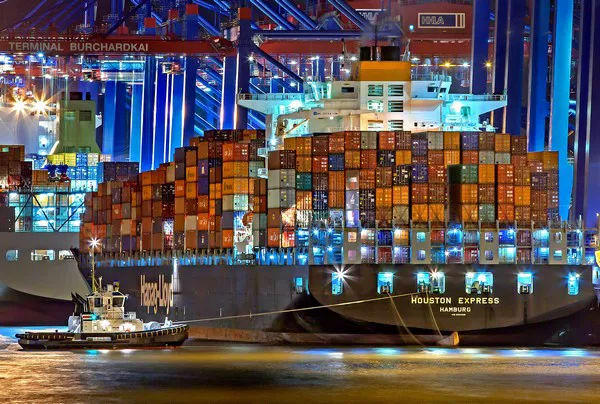What do businesses that source goods from overseas have to consider this year? Shypple has listed the four forecasts that will affect shipping goods the most. They also touch on a topic that deserves more attention, states the Dutch logistics company.

"Businesses and consumers are anxiously following the global goods transport fiasco. People expect their products to be delivered faster. Yet, the worldwide shipping network faces delay after delay. And container prices continue to rise. All that affects delivery times and consumer prices," Shypple writes.
"The sector is, more than ever, subject to frequently changing situations. These create uncertainty. The logistics industry continues to grow, and it is under pressure. The Ever Given blocking of the Suez Canal (March 2021) shows how a single incident can cause this already full transport chain dam to burst. Nonetheless, the Suez Canal handled ten times as many ships last year than in 2020 (20,649 vs. 18,830). That's despite the Ever Given incident. And there are things that are going to determine delivery times and procurement prices."
Here are four forecasts Shypple considers most impactful:
1) Pandemic lockdowns mean volatile sailing routes
"This already happened in the very first week of January in Ningbo. This city is near Shanghai and is China's second-largest port. Quarantine measures and limited access to terminals are causing significant delays in container shipments."
"Last year, cities and ports were, more often, unexpectedly, locked down. China is the world's largest exporting country. It has a 'zero-tolerance' approach to COVID-19. And virtually every other country, too, regularly adjusts its measures. As long as the pandemic continues, the industry faces constantly changing situations. These create bottlenecks and delays. As a result, any order may take longer to arrive."
2) Impact of major events like the Chinese New Year and Winter Olympics
"In the Netherlands, transport chains take strain between Black Friday and Christmas. The same should happen in the East at the beginning of February. But on a much larger scale. This year, Chinese New Year coincides almost exactly with the Winter Olympics. And China is hosting that event."
"Many Chinese businesses usually close around the Chinese New Year. That affects the transport chain and deliveries. One of the largest sporting events in the world will only add to that. There is a real possibility that many highly polluting factories in China will have to close their doors. That is to reduce emissions while the athletes are competing in that country. These and similar events definitely affect the supply of goods, in this case from China."
3) Container prices keep rising
"And according to experts, we'd better get used to that, for now. The Shanghai Containerized Freight Index is a key business indicator. It shows weekly containerized freight prices from ten Chinese ports on standard routes worldwide. Those prices have risen from around €1,500 to about €7,783 in the past two years. Experts think this could have a considerable effect on shoppers' wallets."
4) Ever-increasing delays
"There are bottlenecks in the transport sector. And there's increased consumer demand. These two factors lead to massive delays in the supply of goods. The average delay per container used to be roughly half a day in January 2019. By the end of 2021, it was more than a week. That makes the network for shipping goods increasingly vulnerable."
Sustainable shipping
Shypple ends its blog with a topic that would be great to see more in 2022, but unfortunately, still has a considerable way to go. "Shipping emits about 2.5% of all annual greenhouse gases, mainly because it relies on fossil fuels. To counteract that environmental impact, the industry needs to find ways to reduce its carbon footprint."
"We need to better understand carbon emissions and focus on more sustainable choices to transport goods. At Shypple, we're taking the first steps. We're promoting the most emission-free booking option and more biofuel sailings. We also recommend compensation programs. But there's far more to be done to clean up the industry."
"The current developments mean shippers are dependent on, and benefit from, real-time cargo overviews. Digital freight forwarders, like us, offer this. Shippers, business owners, and consumers can, therefore, anticipate all possible planned and unplanned events that will affect delivery. They can efficiently deal with price fluctuations and delays. And they can be more conscious of sustainable transportation options. And that's a big step towards a cleaner, flexible network for shipping goods," Shypple concludes.

Source: Shypple
